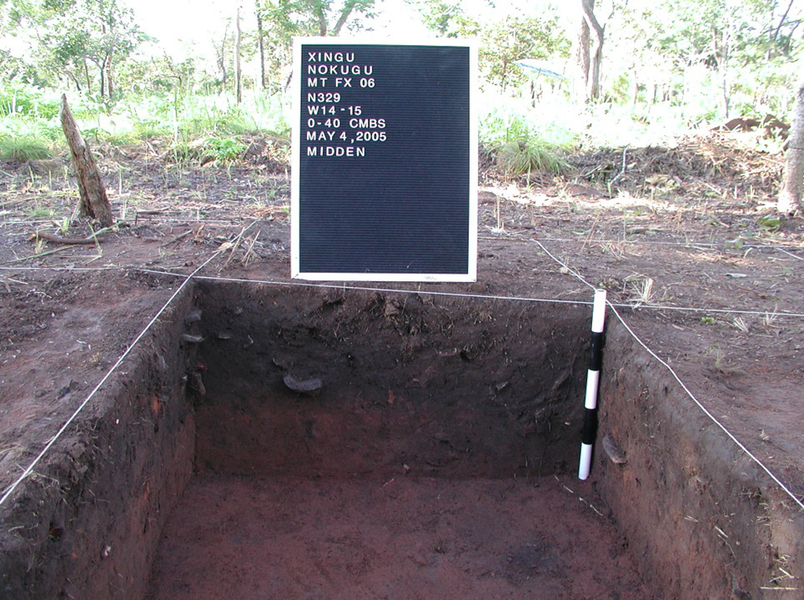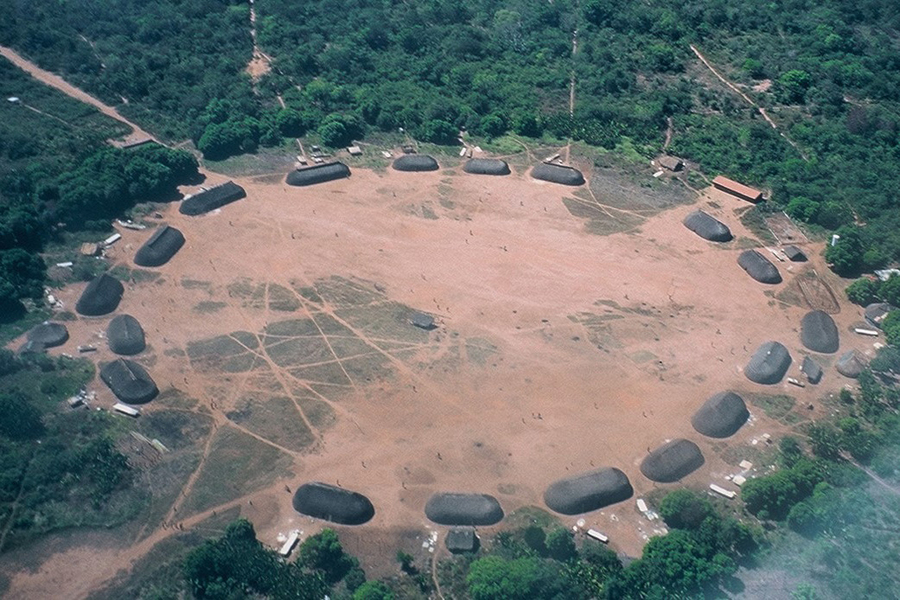Since the start of the early 2000s, Schmidt, Heckenberger and others, have compiled a large amount of data and observations about the Amazon while working with indigenous tribes located around the Upper Xingu River basin (ScienceDaily, 2023). Most notable of these observations was the recording of various patches of ‘dark earth’ that were scattered throughout the area. They found that many of these patches were located in close proximity to villages and habitable areas in the Kuikuro Indigenous Territory.

To determine their function, Schmidt and his associates began to observe modern Kuikuro practices of managing the soil. Modern practices by these indigenous peoples entails the creation of “middens,” or waste piles, that are made of waste and food scraps left to decompose. This decomposition creates nutrient rich ‘dark earth’ that can be used in agriculture. Furthermore, it was observed that the farmers of this tribe would spread ashes and organic waste in places where they planned to grow crops, thereby acting as fertilizer and a source of nutrients (Chu, 2023).

After taking samples of modern dark earth and dark earth from archaeological sites, Schmidt and researchers from MIT measured the chemical compositions of both soil, then compared them. They believe that ancient amazon peoples used similar methods as the Kuikuro people to make fertile land for planting due to both soils being enriched with the same elements and having similar compositions; as well as the patterns in which these dark earth areas were made being similar across both sites, where dark earth areas were placed in a radial pattern concentrated in the center that would extend outwards to form a wheel shape. The creation of these fertile areas represents a significant shift in their society from hunter gatherer bands to segmentary societies, which typically use agriculture to acquire food. This shift in food production typically results in increases in population and the development of more complex culture. While the layout of the dark earth in an almost wheel-like structure may be practical for the environment that they are in, the shape may also be indicative of some cultural or religious expression, though that has yet to be determined.

While the creation of dark earth might seem underwhelming, it represents a major innovation and significant cultural and social change among the ancient inhabitants of the Amazon. Recognizing that the natural soil of the Amazon rainforest is severely depleted of resources and is unsuitable for growing crops, they developed techniques to insert nutrients into the environment. Rather than forcing the environment to adapt to their needs and changing society, they developed methods to better the environment so that they might thrive there.
Their methods, although unintentionally, created a vast carbon sink and a potential carbon reservoir in the soil (Science, 2023). Perhaps modern society can take this as a learning opportunity and possible method for solving, or at least mitigating, humanity’s impact on Earth’s climate and global ecosystem.
References:
Massachusetts Institute of Technology. “Ancient Amazonians intentionally created fertile ‘dark earth’.” ScienceDaily. www.sciencedaily.com/releases/2023/09/230920152306.htm.
“Intentional Creation of Carbon-Rich Dark Earth Soils in the Amazon.” Science, 2023. https://www.science.org/doi/10.1126/sciadv.adh8499.
Chu, Jennifer. “Ancient Amazonians Intentionally Created Fertile ‘Dark Earth.’” MIT News | Massachusetts Institute of Technology. Accessed September 24, 2023. https://news.mit.edu/2023/ancient-amazonians-intentionally-created-fertile-dark-earth-0920.
Further Readings:
Smithsonian Institution. “Indigenous Peoples Were Stewards of the Western Amazon.” Smithsonian Institution, January 1, 1970. https://www.si.edu/newsdesk/releases/indigenous-peoples-were-stewards-western-amazon.
Schwartzman, Stephan, André Villas Boas, Katia Yukari Ono, Marisa Gesteira Fonseca, Juan Doblas, Barbara Zimmerman, Paulo Junqueira, et al. “The Natural and Social History of the Indigenous Lands and Protected Areas Corridor of the Xingu River Basin.” Philosophical transactions of the Royal Society of London. Series B, Biological sciences, April 22, 2013. https://www.ncbi.nlm.nih.gov/pmc/articles/PMC3638430/.
